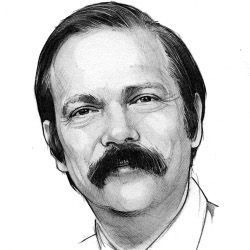
The principal-agent problem, or the Agency Dilemma, arises when one or more persons (the "agents") are making decisions and taking actions on behalf of other persons (the "principals"). The dilemma occurs in circumstances where agents are motivated to act in their own best interests, which are contrary to those of their principals. A common instance of this dilemma is that of corporate management (agents) and shareholders (principals). A more complicated setting, which can be called the Agency Trilemma, is one in which we have two types of agents—for example, elected officials (agents) and civil-service officers (agents)—and citizens (principals). The conflict now is not only between principals and agents, but also between the two different types of agents.
Such a three-way conflict arises also in professional societies, such as ACM, which have members (principals), elected officials (agents), and permanent staff (agents). Aligning the interests of these three groups can be challenging. A prominent failure of such alignment occurred in December 2019, when the American Association of Publishers issued a public letter to U.S. President Trump, endorsed by over 135 publishers, including ACM, urging to abandon a potential executive order that would mandate free release of publications resulting from federally sponsored research. The rationale for the letter is the reality that many scientific and professional societies, including ACM, derive a significant portion their revenues from scholarly publishing. Those revenues help pay for other functions the societies perform, such as producing magazines and newsletters, offering education and outreach programs, and sponsoring awards and conferences.
Yet ACM members broadly believe ACM ought to shift from a subscription-based publishing model to an open access model. The December 2019 letter triggered such an uproar among ACM members that in January 2020 ACM's President sent a letter to the White House Office of Science and Technology Policy expressing ACM's regrets having endorsed the letter. In June 2020, ACM Council voted to embark on a five-year transition to an open access publishing model, based on the success of a multiyear pilot.
I was not privy to the deliberations that led to ACM's President signing the December 2019 letter with the approval of ACM's Executive Committee (EC), only to retract it a month later. This EC decision, however, cannot be divorced from (valid) concerns by ACM staff, which I have heard many times, regarding the potential impact of open access publishing on ACM revenues. I have worked closely with ACM staff over the past 15 years and I found them to be highly competent, hard-working, and dedicated. With very few exceptions, however, they are not computing professionals, and their perspective is quite different than that of ACM members.
This gap between ACM members and staff is supposed to be bridged by ACM's elected and appointed officers, who, together with at-large members, comprise ACM Council. The Council has the duty to formulate policies and supervise their execution. But while ACM staff are (by and large) full-time employees, ACM officers are volunteers, and their service is on top of their regular jobs. Furthermore, ACM officers have a short tenure, typically serving just two years. Thus, there is a knowledge gap and, consequently, a power gap between the two types of agents. This translates to a growing gap between ACM as an organization and its membership. This gap has recently led to strong disagreement between ACM staff and an ACM Task Force regarding ACM's Digital Library.
The gap between members and staff is increasing in significance due to three strategic threats that ACM is facing. First, there is the risk in making the change from subscription-based publishing to open access publishing. ACM has formulated a transition plan, but its successful execution is far from guaranteed. Second, ACM conferences, the second major activity of ACM, may have to completely reinvent themselves in view of the climate-change challenge. The business impact of such a reinvention is far from clear. Thirdly, the younger generation of professionals does not seem to feel the need to join professional associations. While the tech industry, together with computing-degree-program enrollments, have been booming, ACM membership growth has been rather modest.
I believe there is an urgent need for a deep examination of ACM's structure with the goal of reducing the gaps between ACM and its members. Possible remedies to consider are increasing the length of officers' tenure, giving elected and appointed officers more influence over ACM operations, and enhancing the authority of ACM's CEO, who usually is a member of the computing community and is formally responsible for the general administration of the affairs of ACM and its principal office.
As we say in Houston, "ACM, we have a problem!"



Join the Discussion (0)
Become a Member or Sign In to Post a Comment